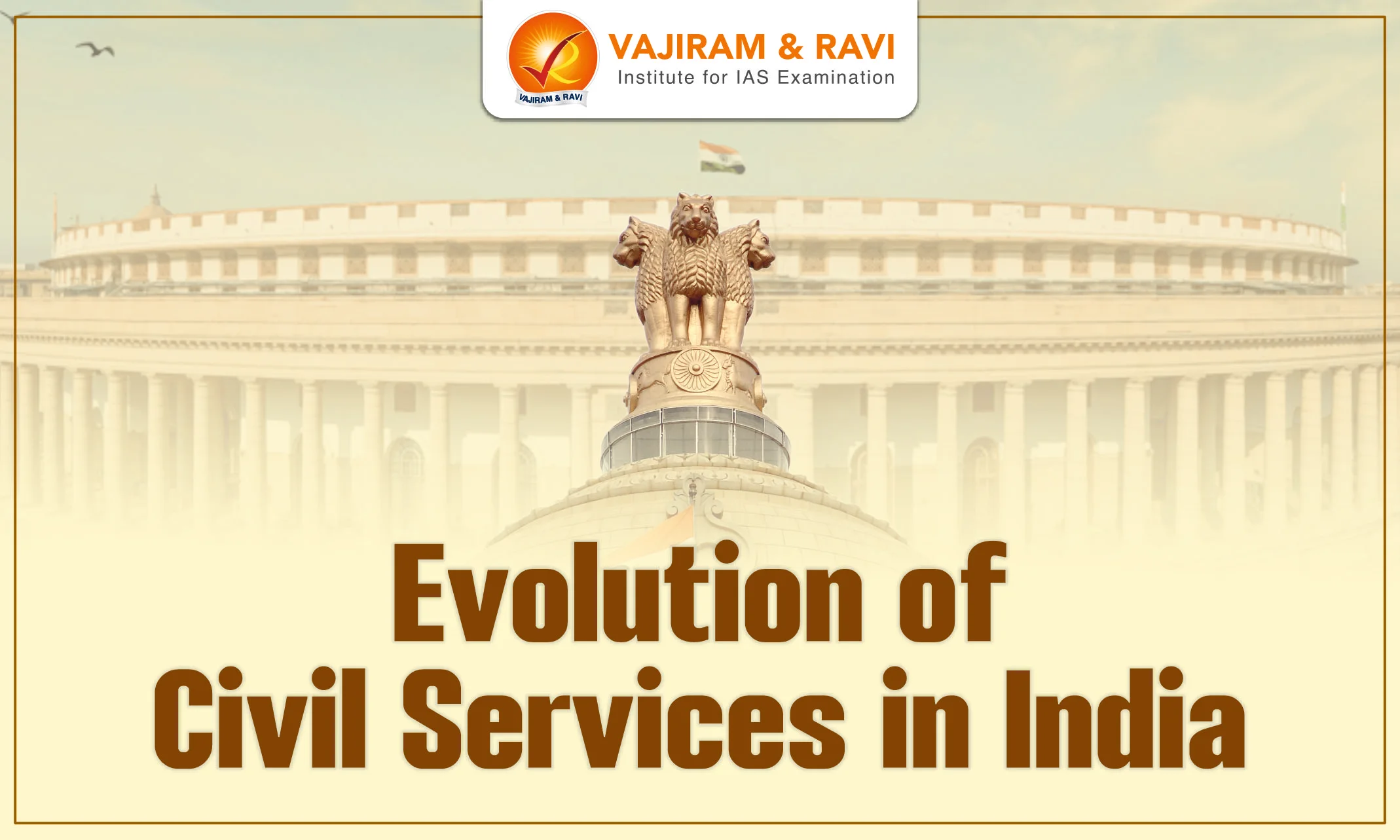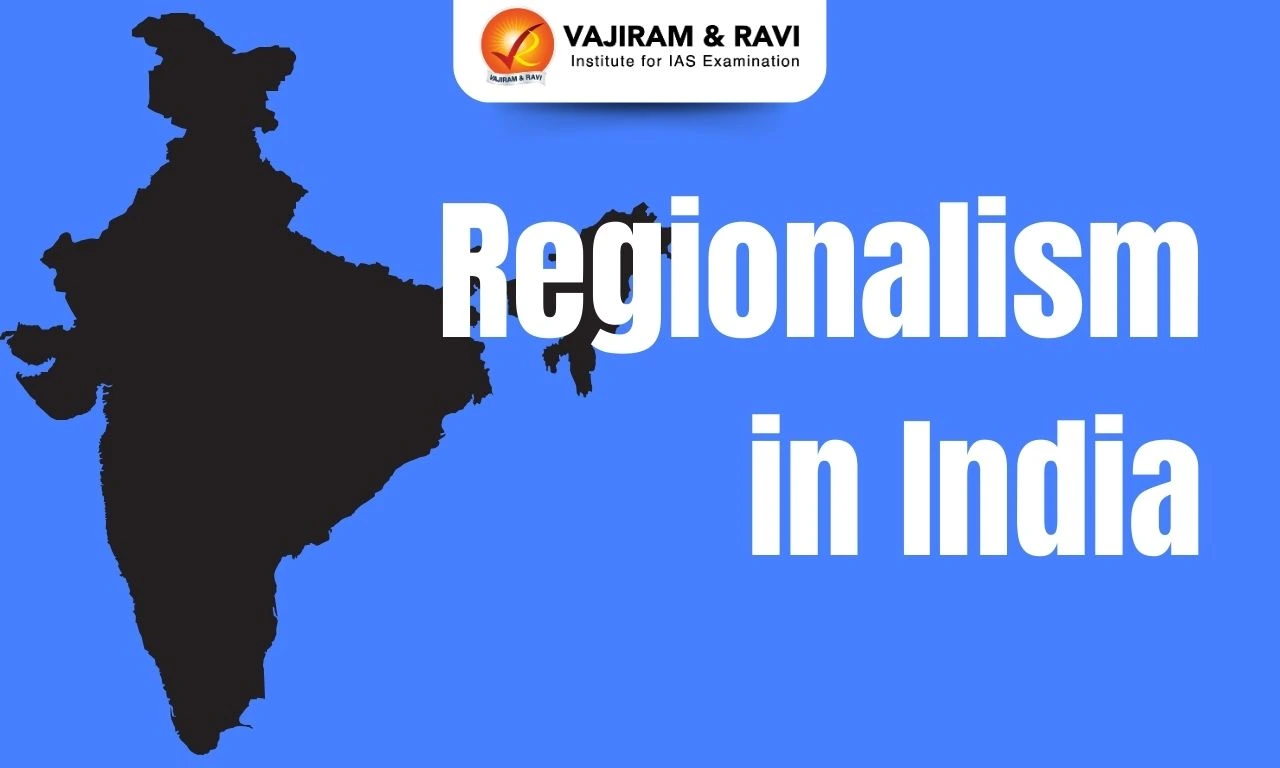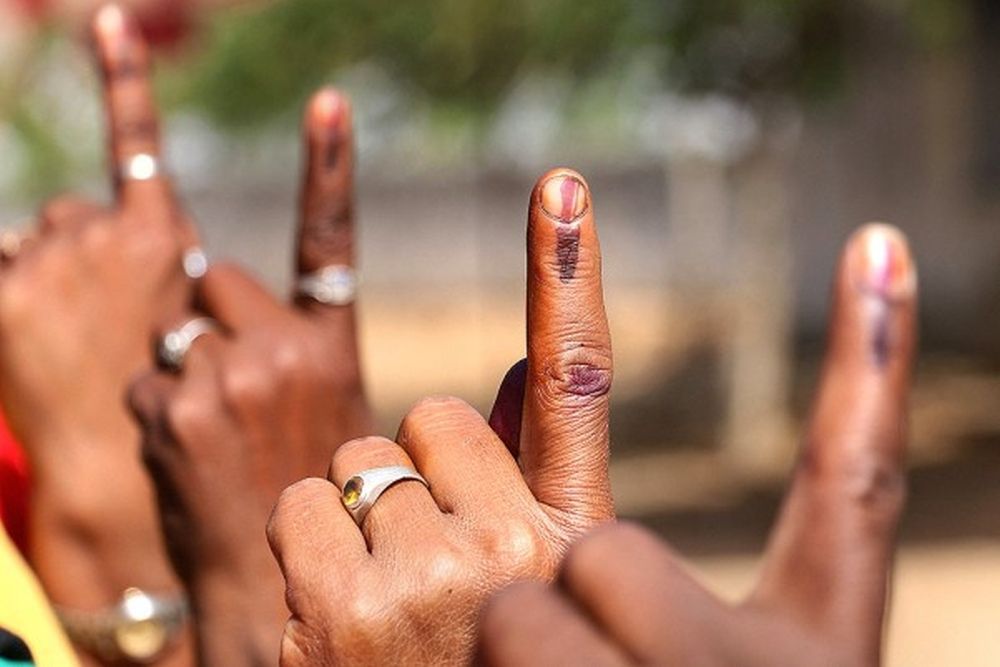Evolution of Civil Services: By 1784, the East India Company’s administration of India had been brought under the control of the British Government. The needs of the British economy were determining its economic policies. In the beginning, the Company left the administration of its possessions in India in Indian hands, confining its activities to supervision. But it soon found that British aims were not adequately served by following old methods of administration. Consequently, the Company took some aspects of administration into its own hands.
Under Warren Hasting and Cornwallis, the administration at the top was overhauled, and the foundations of a new system of Civil Services based on the English pattern were laid down. The spread of British power to new areas led the nineteenth century to more fundamental changes in the system of administration. But the overall objectives of imperialism were never forgotten.
The British administration in India was based on main pillars like the Civil Service, the Army, the Police, the Judiciary etc. The rules, regulations and reforms in the administration paved the way for consolidating British rule in India.
Evolution of Civil Services during British Rule
The Civil Service was brought into existence by Lord Cornwallis (1786-93). From the beginning, East India Company (EIC) carried its trade through servants who later became administrations as the Company became a territorial power.
- These servants were highly corrupt. By oppressing local weavers, artisans, merchants and zamindars, they amassed untold wealth with which they retired to England.
- None of the Acts of Parliament between 1773 and 1793 looked into the education and training of Civil Servants in India.
The reformers and acts for civil services during British Rule were:
| Reformer / Acts | Features / Recommendations |
| Cornwallis | – He was strict in upholding the laws prohibiting the official acceptance of gifts and bribes as well as private trade.
– He increased the salary paid to the Company’s employees. The Company’s Civil Services actually rose to become the highest-paid profession worldwide. – He followed the policy of complete Europeanisation of Civil Services. – The Company’s British covenanted servants filled all higher positions in Government service. – He laid down that promotion was by seniority. – The duties of different departments were defined. – Salaries were proportionate to responsibility. |
| Charter Act of 1793 | – The Act provided the Charter or Rights of Civil Servants.
– In accordance with its provisions, any vacancy in an Indian civil office “shall be filled from among the civil servants of the company belonging to the Presidency in which such vacancies occurred.” – Despite enjoying patronage in England, the Act barred foreigners from entering the service. – The age requirement for hiring writers was raised to 22 years. |
| Lord Wellesley | – For the purpose of educating young recruits for the Civil Services, Lord Wellesley founded the College of Fort William in Calcutta in 1800.
|
| The Charter Act of 1833 | Suggested implementing a limited competitive exam.
– Until 1853, Civil Service appointments were made by EIC directors, allowing Board of Control members some nominations. |
| The Charter Act of 1853 | – It mandated that all Civil Service recruits would be chosen by way of a competitive examination. |
| Committee on the Indian Civil Service | – Also known as the Macaulay Committee, was established to advise on the measures to be adopted to give effect to the Act of 1853.
|
| The Indian Civil Service Act of 1861 | – It set aside a number of key positions for the Covenanted Service to fill.
– Additionally, it stipulated that anyone, Indian or European, could be appointed to any of the positions listed in the schedule attached to the Act as long as they had lived in India for at least seven years. – For the district in which he was employed, a person had to pass a vernacular language examination. – The Indian public’s increasing demand for the Indianisation of services was not met by the provisions of this Act. – The Act virtually remained a ‘dead letter’ largely because of the basic difficulty in implementing the recruitment requirements of the Act. |
| Statutory Civil Services (1879) | – The British Parliament passed an Act in 1870 authorising the appointment of any Indian to any office or the civil service without reference to the Act of 1861, which reserved specific appointments to the covenanted service.
– In 1879, new regulations that created the Statutory Civil Service were drafted.
|
| Aitchison Commission (1886) | – Tasked with creating a plan for admitting Indians to every branch of public service.
– The Commission rejected the idea of changing the recruitment process for the covenanted civil service. – It suggested getting rid of the Statutory Civil Service and dividing the Civil Services into three categories: Imperial, Provincial, and Subordinate.
– Additionally, it suggested reducing the number of scheduled positions reserved by the Act of 1861 for members of the covenanted Civil Service and transferring a specific number of positions to the provincial Civil Service. – Also, the term “covenanted Civil Service” was abolished, and the nation’s civil services were now divided into three grades: Imperial, Provincial, and Subordinate. – The Secretary of State in Council was responsible for hiring for the superior positions within the Imperial Civil Service. |
| The Islington Commission (1912) | – In 1912, a Public Service Commission with Lord Islington as its chairman examined the issue of Indianisation.
– The Commission observed that at that time, Indians constituted only 5% of the civil service. – The Commission supported two separate channels of access to the Indian Civil Service itself
– By setting aside twenty-five per cent of the positions for Indians, or 189 out of 755 positions, it aimed to implement a strategy for promoting Indians to higher positions. – It proposed the categorization of the services under the Government of India into Class I and II. – No radical change in the structure of the organization of the civil service was envisaged by the Commission. – Also, it took nearly four years for it to submit the report.
|
| The Government of India Act, 1919 | – It suggested categorizing services into three groups:
– The term “All India Services” applied to all Imperial services that were then operating in the provinces, whether in the reserved or transferred departments.
– The Act was proposed as a safeguard against political influence in the constitution by a Public Service Commission entrusted with the task of recruitment to the service. – In 1922, the first competitive examination was held under the supervision of the Civil Service Commission. – The Indian candidates chosen based on their performance were placed on two years of probation at an English university. |
| Lee Commission (Royal Commission, 1923) | – Over the negative British response towards the Indianisation of services, in 1923, a Royal Commission on Superior Civil Service in India under the chairmanship of Lord Lee was appointed.
|
| The Government of India Act, 1935 | – As the Act of 1935 introduced provincial autonomy under responsible Indian Ministers, the rights and privileges of the members of the civil services were carefully protected.
– Both the Governors and the Governor General had a special duty to safeguard the privileges and rights of the civil service. – It was provided that a civil servant was not to be dismissed from service by an authority below the rank of the officers who had appointed him. – The salaries, pensions, and emoluments were not subject to the vote of the legislature. – The Act also provided for the setting up of a
– As a result of the introduction of provincial autonomy under the Act, only three services, i.e. Indian Civil Service, the Indian Police Service and the Indian Medical Service were to continue as All India Services. – Recruitment to other All India Services like Indian Agricultural Service, Veterinary Service, Educational Service, Service of Engineers, and Forest were provincialized. |
Since Cornwallis’ time, the rigid and total exclusion of Indians from the Indian Civil Service has been a distinctive feature of it. The British were convinced that only English personnel could firmly establish an administration based on British ideas, institutions, and practices. The British lacked faith in the Indians’ competence and morality. It was intentional for Indians to be excluded from the Civil Services. These services were necessary at the time because Indians could not be trusted to establish and maintain British rule in India. The Indian Civil Service, often referred to as the “steel frame,” was instrumental in establishing and upholding British rule in India.
Last updated on April, 2025
→ UPSC Notification 2025 was released on 22nd January 2025.
→ The UPSC Vacancy 2025 were released 1129, out of which 979 were for UPSC CSE and remaining 150 are for UPSC IFoS.
→ UPSC Admit Card 2025 is expected to release in first week of May for CSE Prelims Exam 2025.
→ The UPSC Prelims 2025 is scheduled to be conducted on 25th May 2025 and UPSC Mains 2025 will be conducted on 22nd August 2025.
→ Apply once through it and aspirants can apply for various government exams conducted by UPSC.
→ The UPSC Selection Process is of 3 stages-Prelims, Mains and Interview.
→ UPSC Result 2024 is released with latest UPSC Marksheet 2024. Check Now!
→ UPSC Toppers List 2024 is released now. Shakti Dubey is UPSC AIR 1 2024 Topper.
→ Also check Best IAS Coaching in Delhi
Evolution of Civil Services FAQs
Q1. What were the civil services in India during British rule?+
Q2. Which Indian personality became the first to join Civil Services under British India?+
Q3. What were the primary demands of the Indian National Congress (INC) about Civil Services?+
Q4. Who started British civil service in India?+
















